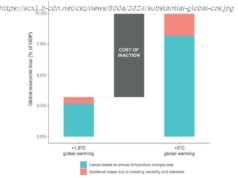Internal stats from Microsoft have painted a dire picture of the reliability of Surface devices at launch.
Some leaked figures from Microsoft show that both the Surface Book and Surface Pro 4 suffered from high return rates when the devices were first launched nearly two years ago. Surface Book Surface Pro 4
This is the story from Paul Thurrott, who reported on an internal memo from Microsoft showing the initial return rate for the Surface Book was around 17% when it first launched, and the Surface Pro 4 didn’ t do much better at around 15%. Paul Thurrott
The SP4 quickly settled down, though, dropping to a slightly more palatable rate of about 8% within two months, although the Surface Book’s problems were more persistent, with the hybrid not dipping to 10% until May 2016 (quite some time after its launch in October 2015) .
There are a couple of things to note here: these figures date way back to said initial product launches in October 2015, and according to Microsoft’s internal stats, the picture is very different now, with return rates of around 3% and just under 5% for the Surface Pro 4 and Surface Book respectively. You can absorb the full picture by having a peek at the graph below:
So, given all this, you can see why Microsoft was majorly riled at the study conducted by Consumer Reports (CR) that emerged last week, which claimed that CR subscribers have seen two-year breakage rates of 25% with Surface products. study conducted by Consumer Reports
In all fairness, these pieces of hardware are far more reliable now.
It would seem that the initial high return rates for the Surface Book and Pro 4 had a major impact in this CR subscriber survey, with Microsoft hinting that this has unfairly skewed the results and misrepresents the reliability of Surface devices today.
In the memo, Panos Panay, Corporate VP, Microsoft Devices, who heads up the Surface line, commented: “We take quality seriously, conducting rigorous reliability testing during development to forecast failure and return rates, which are then continually viewed against [real world data] post-launch.
“We also regularly review other metrics to understand the experience we are providing to our customers and our findings show our products are in a much healthier place than noted by Consumer Reports.”
This certainly seems like a fair enough point, although it’s still equally clear that the initial return rates as shown in these Microsoft figures were far from acceptable for launch products.
And as Thurrott observes, these allegedly weren’ t issues with Intel and Skylake as Microsoft claimed at the time, but a ‘trusted’ source reckons that they were actually the fault of custom Surface drivers and settings implemented by Microsoft.
The company hasn’ t finished firefighting yet, it would seem, and Panay further notes that Microsoft has “put together a comprehensive set of data that reflects the strength of our quality and our customer sentiment, and will be working with partner organizations, including marketing, retail, and sales, to share that information broadly”.
The real point at stake here is whether Microsoft has learned from these mistakes, and future Surface devices won’ t see any more mass returns upon launch.
Microsoft is arguing, of course, that it has, but the proof will be in the pudding, and it’ ll be interesting to see the results of future Consumer Reports surveys – and indeed the initial return figures for the latest iteration of the Surface Pro. This has already had reported issues of its own relating to randomly going to sleep (now fixed) and complaints about the display. latest iteration of the Surface Pro now fixed complaints about the display
We’ ve got in touch with Microsoft for a comment on these figures, and will update this story when we receive a response.
Via: The Verge The Verge We’ ve picked out the best laptops of 2017 right here best laptops of 2017 right here






